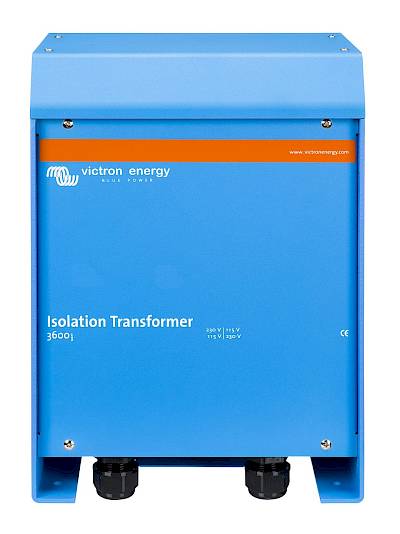
Protecting Your Vessel from Stray Current Corrosion
Protecting Your Vessel from Stray Current Corrosion
If you are in a saltwater marina and have shore power on your boat to charge your batteries, then this Hotwire is for you. To protect against the damaging effects of galvanic corrosion between your boat, your neighbor’s boat and the marina, you require some method of “isolating” your boat. There are two choices, a Galvanic Isolator or an Isolation Transformer, so what is the difference?
Galvanic Isolators are inexpensive and simple to install but could fail thus requiring regular checking. Isolation Transformers are far more expensive and very heavy but rarely fail. Let’s take a look at both.
Galvanic Isolator. The most common method is to install a Galvanic Isolator to the shore power safety ground (e.g. green wire). This will block all low voltage DC current from flowing in the shore power safety ground wire. It breaks the corrosion current path and isolates your boat, preventing some sources of corrosion, while keeping the safety grounding connected. The device will block up to 1.2 VDC potential between shore power ground and boat/ ground. In the past, these units would have to be tested manually so you could never be certain that they were working. A while back, the American Boat and Yacht Council (ABYC) stipulated that Galvanic Isolators include a monitor.
It is important to use “fail-safe” galvanic isolators. Older galvanic isolators and non-“fail-safe” isolators typically disconnect the AC ground when they fail, again removing the AC safety protection. Losing an AC safety ground is a very serious safety concern to boaters and should always avoided. A “fail-safe” galvanic isolator is slightly more expensive but comes with the assurance that if something goes wrong with the isolator, it is designed to always maintain the grounding connection. A failed isolator will no longer protect against corrosion, but will keep the critical AC fail-safe intact. We recommend the Promariner Prosafe Available in 30 or 50 amp models.
Isolation Transformer. Typically, Isolation Transformers are common with production boats that have a lot of underwater metals to protect and the builder can afford both the weight, space, and the cost of the unit. There is no downside to an isolation transformer besides weight, space, and cost. Specific isolation transformers can raise the shore voltage to deal with voltage drop and can be used to adapt the vessel’s internal power system voltage to a higher or lower shore power supply.
However, when it comes to corrosion, Isolation Transformers block all DC voltage differences and also address reverse polarity issues. They are also made of significant amounts of iron and copper, both of which are not light materials. A typical 120V/30A transformer can weight almost 100 pounds while a typical 240V/50A unit almost 300 pounds.. Recent changes to ABYC E-11 AC and DC Electrical Systems for Boats now permit the use of high frequency transformers; allowing manufacturers to build smaller and lighter transformers for pleasure craft. In the future, we will see light weight, low cost power conversion systems coming to market that comply with all the safety requirements of the existing heavy and expensive isolation transformers. A popular brand among boatbuilders is Charles Industries.
Galvanic Isolators only protect up to 1.2 VDC and there are possibilities it could be higher which will allow corrosion to take place even though you have a galvanic isolator properly installed. They don't always survive breaker trips and active monitors are required to meet ABYC standards. Isolation Transformers block all DC voltage preventing stray current corrosion and reverse shorepower polarity,
If your boat is in saltwater, you must have some kind of protection for your onboard electrical and electronic systems, at the very least, install a fail-safe galvanic isolator on your AC shore power system.
About the author: Jeff Cote is the owner of Pacific Yacht Systems, a full service shop delivering marine electrical and navigation solutions for recreational boats. Visit their website and blog for info and articles on marine electrical systems, projects and more: www.pysystems.ca.
Related Content






 $438.23
$438.23 $314.15
$314.15





















